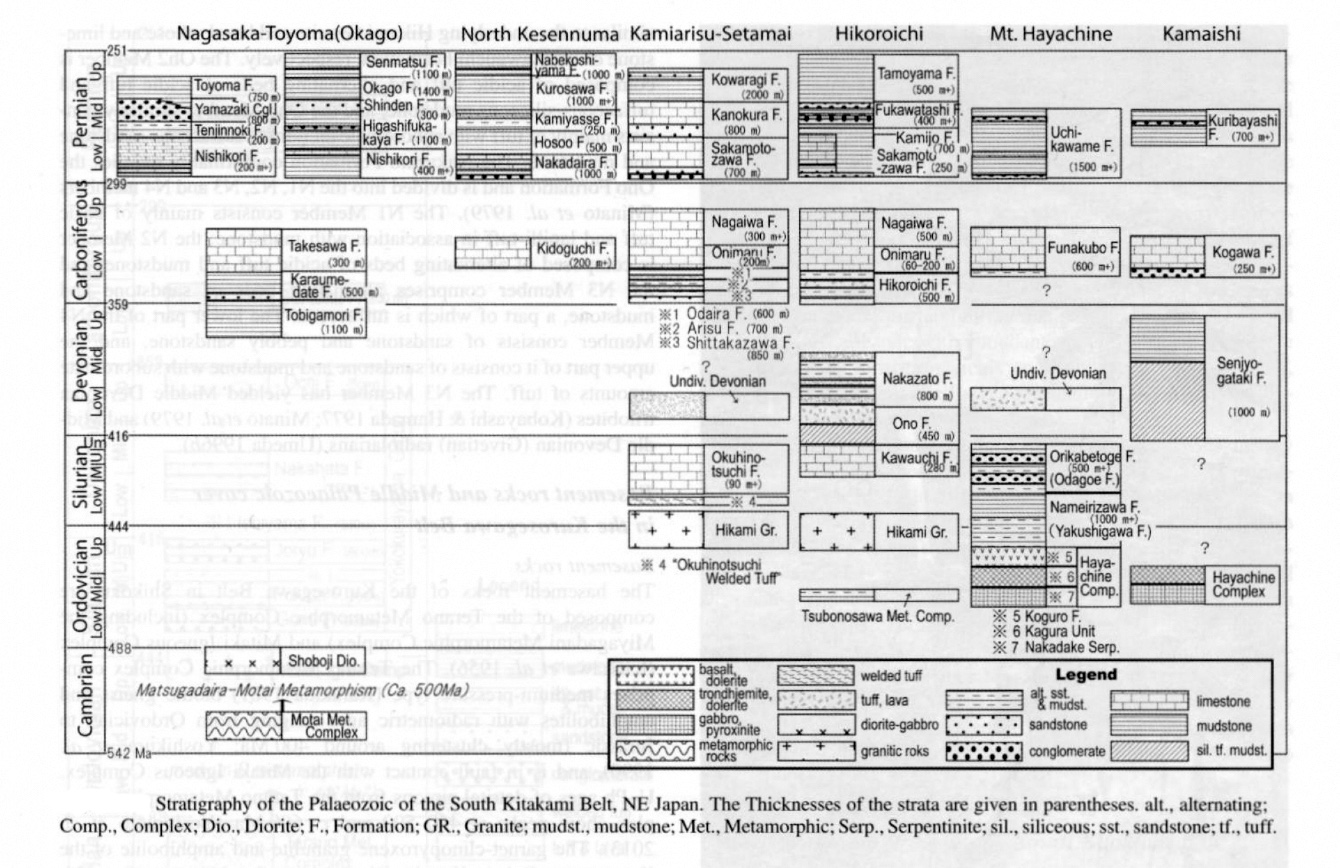Senjyogataki Fm
Type Locality and Naming
Synonym:
Lithology and Thickness
It consists from base to top, of basalt and dolerite, tuff and alternating beds of tuffaceous and siliceous mudstones, and mudstone (Okami et al., 1987).
[Figure 1: Stratigraphy of the Palaeozoic of the South Kitakatmi Belt, NE Japan (after M. Ehiro et al., 2016)]
Relationships and Distribution
Lower contact
Regionally, the schematic strat column indicates the next older unit as Orikabeloge Fm. In the Kamaishi district the uppermost Silurian-Upper Devonian Senjyogataki Fm rests on the Kentosan Unit Fm (equivalent of the Kagura Unit Fm) of the Hayachine Complex, although their stratigraphic relationship is unclear.
Upper contact
Regionally, the schematic strat column indicates the next younger unit as undivided Devonian Fm
Regional extent
GeoJSON
Fossils
The tuffaceous-siliceous mudstone yielded latest Silurian (Pridolian) (Suzuki et al., 1996) to Early Devonian radiolarians (Umeda 1998a), and the uppermost part of the formation contains the Late Devonian (Famennian) plant Leptophloeum (Okami et al., 1987).
Age
Depositional setting
Additional Information
